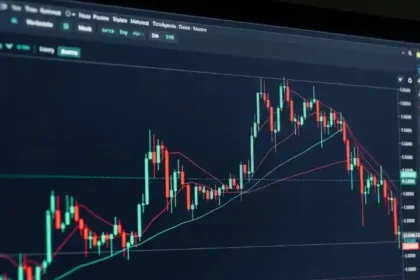Last month, while visiting a bustling jewelry shop in Ho Chi Minh City, I overheard a retiree discussing his gold investments with the shop owner. He shared how he’d bought a few taels of gold during a price dip, hoping to secure his savings against economic uncertainty. His cautious optimism stuck with me, reflecting the mindset of many Vietnamese investors today. Gold remains a cornerstone of financial planning in Vietnam, and with giá vàng hôm nay Việt Nam fluctuating daily, understanding the market’s pulse is more important than ever. As of July 17, 2025, gold prices in Vietnam are navigating a complex landscape shaped by global trends and local dynamics. This article explores the current state of the gold market, offers practical strategies for investors, and addresses common pitfalls, all tailored for a business and finance audience.
Why Gold Prices Matter in Vietnam
Gold holds a special place in Vietnam’s economy and culture. It’s not just a status symbol or a gift for weddings; it’s a trusted hedge against inflation and currency fluctuations. On July 17, 2025, giá vàng hôm nay Việt Nam saw SJC gold trading at around 118.6 million VND per tael for buying and 120.8 million VND for selling, while 9999 gold rings hovered near 119 million VND per tael. These figures reflect a slight uptick, driven by global gold prices climbing to approximately 3,340 USD per ounce, up 0.3% in the past 24 hours.
The appeal of gold in Vietnam stems from its stability compared to the volatile Vietnamese dong, especially amid global economic shifts. Recent U.S. policy announcements, including trade tariff adjustments, have stirred markets, pushing investors toward safe-haven assets like gold. Locally, the State Bank of Vietnam’s proposal to mandate bank transfers for gold transactions above 20 million VND aims to enhance transparency, potentially affecting how investors buy and sell. For businesses and individuals, staying informed about these trends is key to making sound financial decisions.
Strategies for Navigating the Gold Market
Whether you’re a seasoned investor or new to the gold game, a solid plan can help you capitalize on market movements. Here are four practical strategies to consider when tracking giá vàng hôm nay Việt Nam:
Monitor Global and Local Trends:
Gold prices in Vietnam closely follow global rates, influenced by factors like U.S. dollar strength and Federal Reserve policies. Use trusted sources like PNJ, DOJI, or international platforms like Kitco to compare giá vàng hôm nay Việt Nam with global XAU/USD rates. For example, a stronger dollar often pressures gold prices downward, as seen when global prices dipped to 3,290 USD per ounce earlier this month.
Diversify Your Portfolio:
Don’t put all your eggs in one basket. Gold is a safe bet, but combining it with other assets like stocks or bonds can balance risk. For instance, the recent surge in Vietnam’s VN-Index suggests stocks could complement gold investments during bullish market phases.
Time Your Purchases:
Buying during price dips can maximize value. Last week, when SJC gold fell below 121 million VND per tael, savvy investors seized the opportunity. Keep an eye on giá vàng hôm nay Việt Nam for similar moments, but avoid chasing short-term spikes driven by market hype.
Choose Reputable Sellers:
Stick to established brands like SJC, PNJ, or Bảo Tín Minh Châu to ensure authenticity. The proposed regulations on gold transactions highlight the importance of dealing with licensed vendors to avoid counterfeit risks.
These steps can help you approach gold investing with confidence, whether you’re securing wealth for retirement or hedging against economic uncertainty.
Common Challenges and How to Avoid Them
Investing in gold isn’t without hurdles, especially in a market as dynamic as Vietnam’s. Here are three common challenges and practical solutions:
Overreacting to Short-Term Fluctuations:
Recent volatility, sparked by U.S. policy shifts like tariff threats, has led some investors to panic-sell. For example, global gold prices dropped to 3,315 USD per ounce on July 7 before recovering. Solution: Focus on long-term trends rather than daily swings. Use historical data from platforms like TradingView to gauge whether a dip is a buying opportunity or a broader trend.
Ignoring Transaction Costs:
The spread between buying and selling prices can eat into profits. On July 17, the gap for SJC gold was about 2.2 million VND per tael. Solution: Factor in these costs when planning investments, and consider gold rings or smaller denominations for lower spreads.
Lack of Market Knowledge:
Some investors jump in without understanding global influences, like U.S. inflation data or central bank gold purchases. Solution: Stay updated through reliable sources like Vietstock or CafeF, and consult financial advisors to align your strategy with market conditions.
By addressing these challenges, you can make informed decisions and avoid costly mistakes in the gold market.
The Bigger Picture: Gold’s Role in Vietnam’s Economy
Gold’s significance extends beyond individual portfolios. Vietnam’s central bank is increasingly buying gold from local mines to bolster national reserves without spending foreign currency, a move that supports domestic mining while stabilizing the economy. This strategy aligns with global trends, as the World Gold Council notes that central banks worldwide are boosting gold reserves to reduce reliance on the U.S. dollar.
Locally, the surge in gold ring prices—up 2.5 million VND per tael in recent days—reflects growing demand for physical gold, especially among retail investors. Meanwhile, silver has emerged as a surprising contender, with prices hitting a 14-year high in markets like India, prompting some Vietnamese investors to diversify into silver bars. These shifts highlight the need for a flexible investment approach, balancing gold with other precious metals or assets.
For businesses, gold’s stability offers a hedge against currency risks, particularly for import-export firms dealing with dollar fluctuations. The proposed non-cash transaction rule could streamline operations for larger players but may challenge smaller retailers accustomed to cash deals. Staying ahead of these regulatory changes is essential for businesses navigating giá vàng hôm nay Việt Nam.
Looking Ahead: What’s Next for Gold Investors?
As we move through July 2025, giá vàng hôm nay Việt Nam remains a barometer of both global and local economic health. While short-term volatility tied to U.S. policies and dollar strength persists, gold’s long-term appeal as a safe-haven asset endures. Investors should keep an eye on upcoming U.S. inflation data and trade policy developments, which could sway global prices and, by extension, Vietnam’s market.
For the retiree I overheard in Ho Chi Minh City, gold is more than an investment—it’s peace of mind. Whether you’re a business owner hedging against currency risks or an individual building a nest egg, understanding giá vàng hôm nay Việt Nam empowers you to make smart choices. Share your thoughts in the comments or consult a financial advisor to tailor your strategy to today’s market. Staying informed and strategic is the bottom line for thriving in Vietnam’s dynamic gold market.





